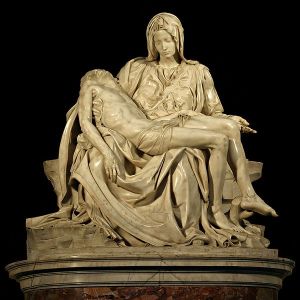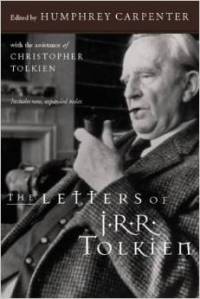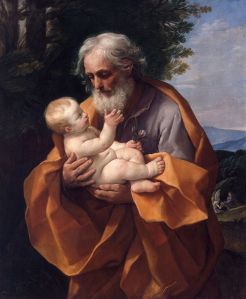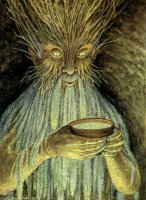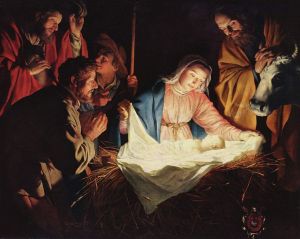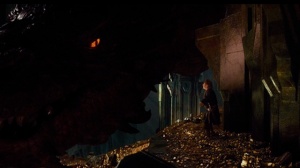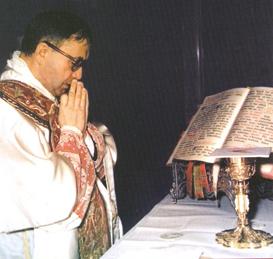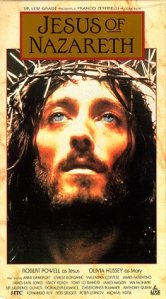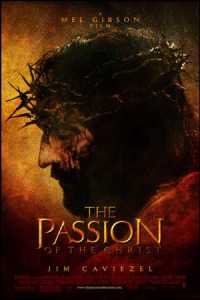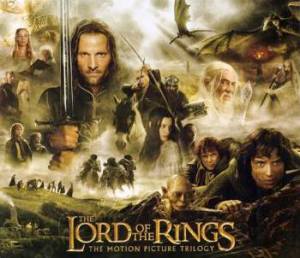
Note: If you are interested in reading part one, click here
In his great book — which I have referenced before, and which I highly encourage people to read — “Love is Stronger Than Death,” Peter Kreeft makes the following observation about modern man’s scientific/technological dream:
The (immortality) Pill will be the fulfillment of one of our deepest and darkest dreams, the Oedipus complex. Now we will be able to kill our father (God), and marry our mother (earth). For without death, and with an earthly technological paradise (. . .) (w)e can now return with our phallic power of technology into our birth canal.”
Neither I nor Kreeft are suggesting that modern technology is bad. But our technological pride and idolatry of “progress” has led to a certain rape of nature.
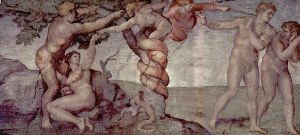
What we tend to forget, however, is that this is merely one manifestation of a phenomenon that has been going on since the beginning of human history. When the first human beings defied God and thus fell from grace, they brought a curse upon the earth.
The harmony in which (our first parents) had found themselves, thanks to original justice, is now destroyed: the control of the soul’s spiritual faculties over the body is shattered; the union of man and woman becomes subject to tensions, their relations henceforth marked by lust and domination. Harmony with creation is broken: visible creation has become alien and hostile to man. Because of man, creation is now subject “to its bondage to decay”. (CCC 400 — bold added)
The Bible is very clear that humankind has dominion over the earth. But this is not, was never, and never will be a dominion of selfish use. The Catechism of the Catholic Church puts it this way:
Animals (. . .) plants and inanimate beings, are by nature destined for the common good of past, present, and future humanity. Use of the mineral, vegetable, and animal resources of the universe cannot be divorced from respect for moral imperatives. Man’s dominion over inanimate and other living beings granted by the Creator is not absolute; it is limited by concern for the quality of life of his neighbor, including generations to come; it requires a religious respect for the integrity of creation.
Animals are God’s creatures. He surrounds them with his providential care. By their mere existence they bless him and give him glory. Thus men owe them kindness. We should recall the gentleness with which saints like St. Francis of Assisi or St. Philip Neri treated animals.
God entrusted animals to the stewardship of those whom he created in his own image.
(CCC 2415-2417 — bold added)
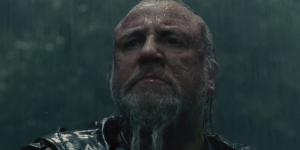 Darren Aronofsky, co-writer/director of “Noah,” gives us a key example of the opposite impulse — the one given rise to by the Fall of Adam and Eve — in Tubal-cain (Ray Winstone). At one point, we see him grabbing a live animal and biting off its head; he defends his action by saying that God put mankind at the top of creation, and therefore all other creatures on this earth serve man.
Darren Aronofsky, co-writer/director of “Noah,” gives us a key example of the opposite impulse — the one given rise to by the Fall of Adam and Eve — in Tubal-cain (Ray Winstone). At one point, we see him grabbing a live animal and biting off its head; he defends his action by saying that God put mankind at the top of creation, and therefore all other creatures on this earth serve man.
The implication is that as masters, we can do whatever we want with the rest of creation, no matter the cost to it.
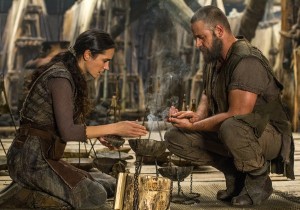
But again, this is not the Divine directive. The true nature of man’s dominion over the earth is more clearly reflected in the lives of Noah (Russell Crowe) and his wife Naameh (Jennifer Connelly). Their family takes on the role of stewards, or caretakers, of God’s creation. They use only what they need, and they devote themselves to tending the earth and its creatures as they would the Garden of Eden.
Why am I talking about all of this? Believe it or not, it’s not because today is Earth Day. The timing of this post is fitting, but purely coincidental (at least as far as my intentions go; I can’t say that God did not, in His providence, have something to do with it). Many Christians took issue with “Noah,” labeling it vegan propaganda and a mistreatment of God’s Word by imposing modern environmentalist ideas onto it.
I hope, however, that I have demonstrated the film’s portrayal of concern for creation to be, in fact, perfectly Biblical and authentically Christian.
If not…
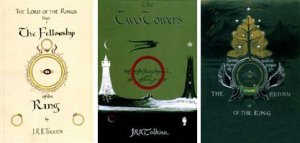 …take a look at J.R.R. Tolkien’s “The Lord of the Rings”…
…take a look at J.R.R. Tolkien’s “The Lord of the Rings”…
 …or at C.S. Lewis’ “Chronicles of Narnia.”
…or at C.S. Lewis’ “Chronicles of Narnia.”
Tolkien and Lewis were both deeply Christian and very much immersed in the Biblical worldview. They saw the connection we have been exploring very clearly, and it comes across powerfully in their work.
Let’s end with a bottom line that goes back to the Kreeft quote: Sin is about making ourselves God; when we make ourselves God, we become selfish and domineering; when we become selfish and domineering, our fellow human beings and the world entrusted to our care suffer.
I do have a little bit more to say about this subject in relation to the movie “Noah.” But in the interest of a certain kind of “stewardship” over my readers’ eyes and patience, I’ll wait ’till next time.
All “Noah” images other than film poster obtained through a Google image search; remaining images from Wikipedia
Read Full Post »

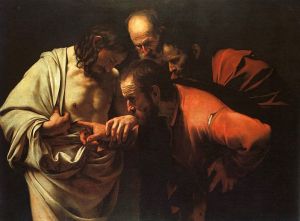 “Caravaggio – The Incredulity of Saint Thomas” by Original uploader was Dante Alighieri at en.wikipedia – Transferred from en.wikipedia; transferred to Commons by User:Tm using CommonsHelper.. Licensed under Public Domain via Wikimedia Commons –
“Caravaggio – The Incredulity of Saint Thomas” by Original uploader was Dante Alighieri at en.wikipedia – Transferred from en.wikipedia; transferred to Commons by User:Tm using CommonsHelper.. Licensed under Public Domain via Wikimedia Commons – 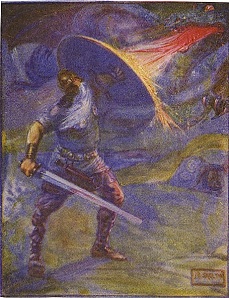 But before we get into that, it might be helpful to flesh out the “old geography” a bit more with a concrete example. One particularly fascinating manifestation of the old geography is the worldview of the pagan Anglo-Saxons, which J.R.R. Tolkien touched on in an essay on “Beowulf”:
But before we get into that, it might be helpful to flesh out the “old geography” a bit more with a concrete example. One particularly fascinating manifestation of the old geography is the worldview of the pagan Anglo-Saxons, which J.R.R. Tolkien touched on in an essay on “Beowulf”: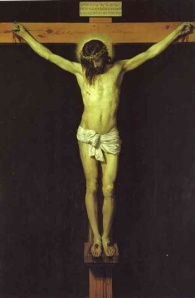 “Cristo crucificado” by Diego Velázquez – [1]. Licensed under Public Domain via Wikimedia Commons –
“Cristo crucificado” by Diego Velázquez – [1]. Licensed under Public Domain via Wikimedia Commons – 